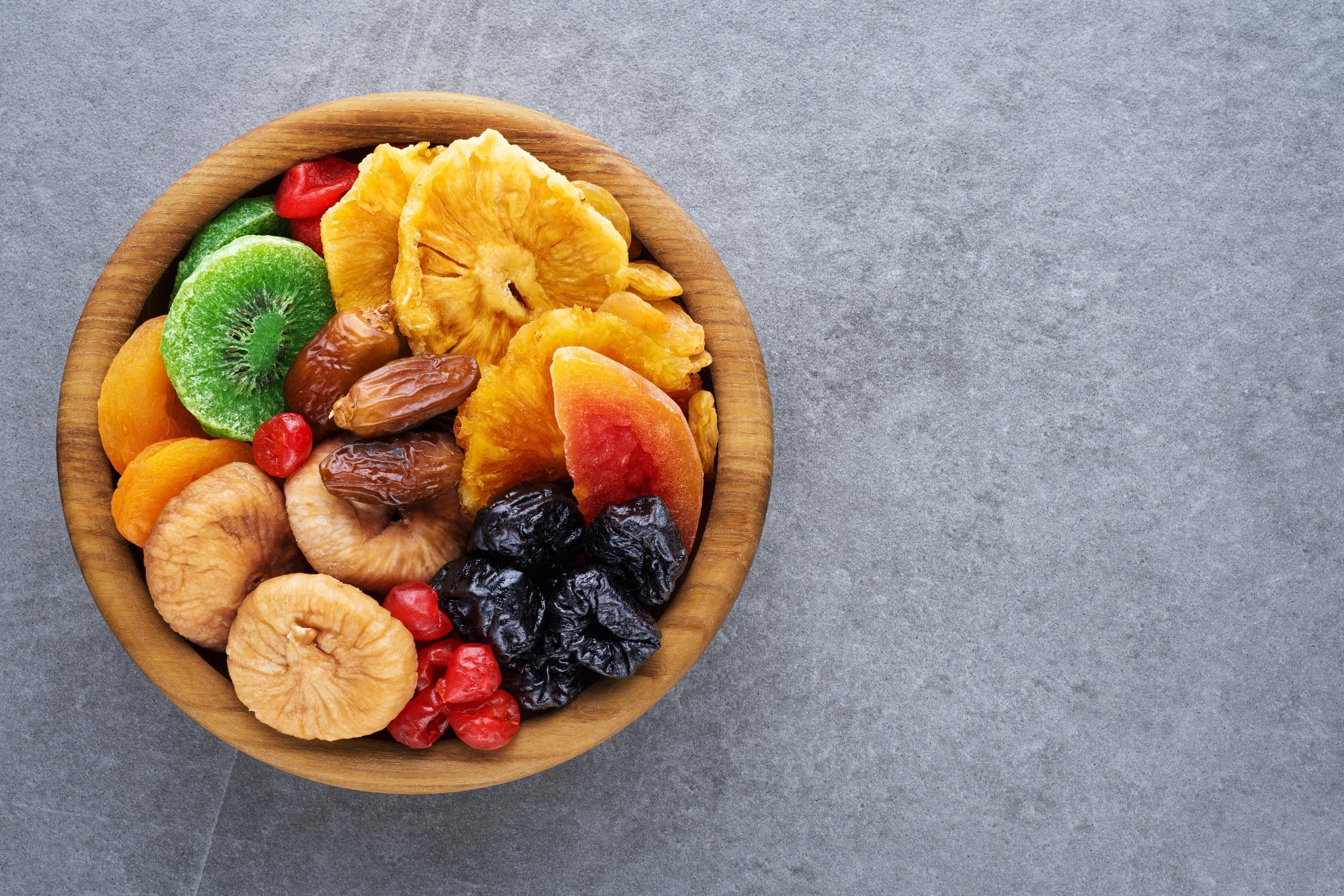A Mendelian randomization study conducted by scientists at the Southern Medical University, China, suggests that dry fruit intake may be causally associated with a reduced risk of osteoarthritis.
The study is published in the journal Medicine.
 Study: Causal association between dried fruit intake and risk of osteoarthritis: A Mendelian randomization study. Image Credit: vitals/Shutterstock.com
Study: Causal association between dried fruit intake and risk of osteoarthritis: A Mendelian randomization study. Image Credit: vitals/Shutterstock.com
Background
Osteoarthritis is a degenerative joint disease affecting more than 240 million people globally. The disease is characterized by pain, stiffness, and swelling in the joints, which collectively make body movements difficult.
Recent evidence from clinical and epidemiological studies indicates that fruit intake may reduce the risk of arthritis because of the presence polyphenols and other bioactive compounds.
Nuts and dry fruits also contain various macro- and micronutrients and health-promoting bioactive compounds and thus are effective in reducing the risk of cardiovascular and other non-communicable diseases, including arthritis.
In this study, scientists have conducted a two-sample Mendelian randomization analysis to investigate the causal relationship between dry fruit intake and risk of osteoarthritis.
Mendelian randomization utilizes genetic variation as an instrumental (predictive variable) variable to study the causal relationship between risk factors and outcomes.
Two-sample Mendelian randomization analysis estimates the causal impact of data on contacts and outcomes in different samples.
Study design
The study used the MRBase database-derived single nucleotide polymorphism sites as an instrumental variable to investigate the causal relationship between dry fruit intake and risk of osteoarthritis. This database contains summary statistics from several genome-wide association studies (GWAS).
In this study, publicly available summary statistics of GWAS meta-analyses for dried fruit intake in individuals included in the UK Biobank were used as the exposure, and a publicly available GWAS for osteoarthritis was used as the outcome.
A total of 41 independent single nucleotide polymorphisms from GWAS data were selected as instrumental variables to study the causal relationship between exposure and outcome. All single nucleotide polymorphisms were genome-wide associated with dry fruit intake.
Important observations
The Mendelian randomization analysis suggested a potential causal relationship between dry fruit intake and reduced risk of osteoarthritis.
The sensitivity analysis conducted in the study showed the presence of low heterogeneity. Heterogeneity refers to the variability of the causal estimates across all single nucleotide polymorphisms.
Further analysis revealed that the findings of Mendelian randomization analysis are reliable.
Study significance
The study finds a potential causal relationship between dry fruit intake and lower risk of osteoarthritis. This indicates that dietary interventions might be useful in preventing and managing complications associated with osteoarthritis.
Existing evidence indicates that dietary interventions can reduce knee or hip osteoarthritis risk by reducing body weight, preventing inflammation, and increasing antioxidant capacity of the body.
Bioactive compounds present in dry fruits, including phenols, flavonoids, carotenoids, proanthocyanidins, stilbenes, chalcone or dihydrochalcone, and phytoestrogens, are known to reduce oxidative stress and inflammation and prevent chondrocyte damage, indicating their usefulness in managing osteoarthritis.
Dry fruits contain 3 to 5-fold higher amounts of minerals and vitamins than fresh fruits. These nutrients can effectively reduce the risk of osteoarthritis by improving the body’s metabolism.
Moreover, recent evidence indicates that dry fruits can mitigate osteoarthritis-related symptoms by beneficially modulating the gut microbiota and its metabolites.
As mentioned by the scientists, the study used the GWAS data of only European ancestry people.
This restricts the generalizability of the findings to other ethnicities and races. Moreover, the study has some heterogeneity in the Mendelian randomization analysis as no adjustments were made for potential confounders, including age, sex, and health status.
To more accurately understand the effect of dry fruit intake on osteoarthritis risk, future studies are needed to analyze specific type, quality and quantity, and mode of action of dry fruits.